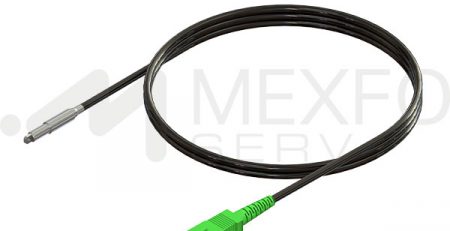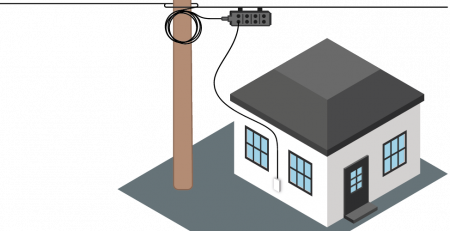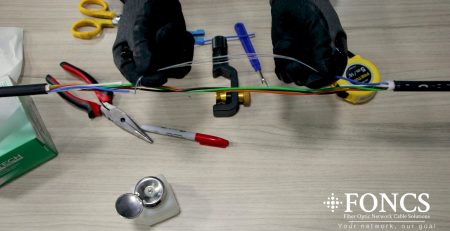Unsheathing Flat Drop Fiber Optic Cables
Delving into the world of fiber optic deployments, Flat Drop fiber optic cables are one of the most direct and easy-to-manage solutions for signal distribution to end-users, due to their size and materials. In this blog post, we’ll break down the unsheathing process to unsheath flat drop cables step-by-step, so you can confidently handle these sleek cables with finesse. Let’s get started!
Flat Drop Fiber Optic Cables – Introduction
In the ever-evolving world of telecommunications, innovations continue to reshape how we connect and communicate: staying connected is not just a priority, but a necessity.
Enter the extraordinary realm of flat drop fiber optic cables – the sleek, versatile, and future-forward solution that’s redefining the game! Flat Drop fiber optic cables rise to the occasion, weaving a web of seamless connectivity that transcends distances and connects communities.
Let’s quickly go over what makes Flat Drop fiber optic cables unique. Unlike traditional round cables, as the name suggests, flat drop cables have a flat shape, making them incredibly convenient for aerial and buried installations.


Flat drop fiber optic cables come packed with an array of features that promise to simplify and develop installations. Crafted from premium-grade materials, these cables ensure exceptional performance, durability, and longevity.
Primarily designed for outdoor and aerial deployments, their unique, flattened geometry sets them apart from other types of cables, increasing their flexibility for installations in any outdoor or indoor-outdoor environment. That’s why they’re the preferred choice for last-mile connectivity and drop installations in fiber-to-the-home (FTTH) deployments.
So, whether you’re embarking on a large-scale infrastructure project or aiming to enhance residential connectivity, flat drop fiber optic cables are reliable and efficient solutions, offering a dynamic solution for fiber optic telecommunications.
- Step 1: Select Your Tools
First things first, let’s gather the necessary tools for the job. You’ll need a sharp cable simple utility knife, a flat drop cable slitter, a loose tube unsheathing tool, and a pair of scissors. We highly recommend using Kevlar cutting scissors to quickly dispose of the FRP strength members, aramid yarns, and any other internal components. With these tools by your side, you’re ready to go!
- Step 2: Inspect the Cable
Before unsheathing, take a moment to inspect the flat drop cable for any damage or abnormalities. Ensuring the cable is in pristine condition will guarantee optimal performance once it’s installed.
- Step 3: Find the Starting Point
Locate the starting point for your unsheathing. You will need to clearly see the point from where you need to unsheathe your cable and mark it in the outer cable jacket with the utility knife.
- Step 4: Unsheath the Cable
Take the cable slitter, insert it on the end of the cable, and reach the marked point on the jacket. Close it and pull along the cable until you reach the end again. Remove the sheath by separating both parts of the outer jacket from the internal components, primarily, the FRP strength members.
- Step 5: Trim the Outer Jacket
Use the scissors to cut the outer jacket. Use it to also cut any internal components as you see fit, including the water-blocking tape, and FRP strength members as necessary. The length of the strength members will depend on your installation and on the type of splice closure you will use in it.
- Step 6: Fiber Access
Take the loose tube unsheathing tool and remove the loose tube to access the fibers at the length you most see fit.
- Step 7: Success!
Congratulations! In a few simple steps, you can now splice your fibers to distribute your signals and reach your end-users effectively.
Safety First: Handle With Care
While unsheathing flat drop cables is a breeze, it’s essential to handle them with care. Avoid bending or twisting the cables excessively to preserve their optimal performance. Always store them properly when not in use and protect them from harsh environmental conditions.
Waveoptics®’ line of flat drop fiber optic cables can help you enable your network with multiple configurations that are resistant and easy to strip: https://foncs.com/product/flat-drop-cable/
And, for a visual guide, watch this video:
FONCS. Your network, our goal.




